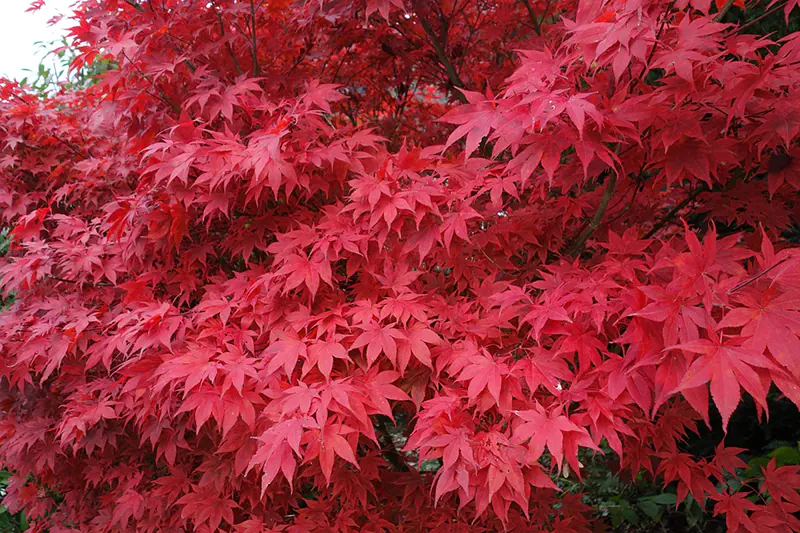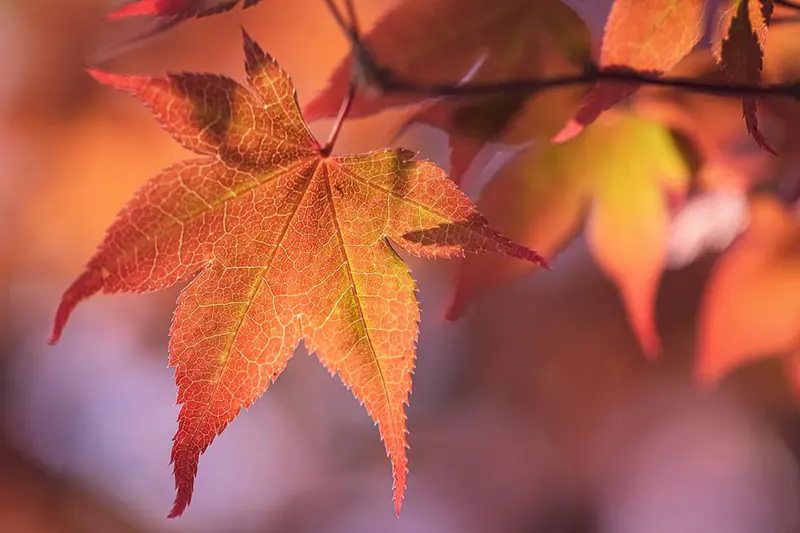Why Are My Red Maple Leaves Turning Green?
This question vexes many gardeners and can be very frustrating for the bonsai enthusiast.
The Japanese Maple (Acer palmatum) is a fantastic bonsai specimen. It has the most beautiful delicate green canopy in spring and summer, which changes to the most beautiful shades of red, orange, and gold in the autumn.
It is a great tree for beginners as it is very forgiving, and its foliage will brighten anywhere that it is placed.
Before discussing why some growers experience issues with the color of the leaves, we need to understand where the red leaves came from.

Understanding Where the Different Colours Come From
All leaves must contain chlorophyll to manufacture the sugars the plant needs to live on. chlorophyll absorbs the red and blue light waves, so most plants’ leaves appear green to the human eye. The chlorophyll molecules are very big and are not water-soluble so they are stored in the membranes of chloroplasts, disc-shaped structures held within the cells.
In some specialized plants, there are additional pigments in the leaves. In the Japanese Maple, this pigment is anthocyanin.
Anthocyanin absorbs the blue, green, and blue-green light wavelengths, so leaves containing anthocyanins appear red to the human eye. Anthocyanins are soluble in water so they reside in the sap. The pH of the sap determines the color; acidic sap turns the anthocyanin bright red, while alkaline sap results in a more purple color.
Anthocyanin is created during a reaction between the sugar and certain proteins in the sap. This reaction needs a high concentration of sugars and light. This is why in large Maple trees, you can get darker purple-red leaves close to the trunk, where little light penetrates the canopy or in an apple, it is red on one side (exposed to the sun) and green on the other (shaded).
But Why Is the Top of My Tree Red and the Bottom Green?
Some cultivars of the Palmatum have lovely pale red leaves in spring, that turn a brighter scarlet in summer and then morph into the traditional autumn foliage we all love.
These trees are often grafted onto sturdy Palmatum stock, and often these grafted trees present a different problem. Any shoots that come from below the graft, so from the rootstock, will have green leaves as this is its natural color. If you have a grafted tree, do not allow the rootstock to produce shoots, remove them as soon as they bud.
Can I Change the Colour From Green to Red?
Yes, you need to think of the botanical reason that the leaves change color. If the leaves are green, it is due to a lack of sunshine. The tree must be moved into the sun to encourage the production of sugars and, consequently, anthocyanin. This will encourage a change in color.
Another reason is warmth and the length of time that the tree gets light. If you have the tree in a controlled environment and you do not allow a natural winter-length day to happen, the trees will not recognize that autumn has come to prompt the change.

Conclusion
Japanese Maples are extremely beautiful trees and their foliage can be stunning when the color changes.
Understanding the botanical reason for the change in color will assist you in managing any problems with the change.






